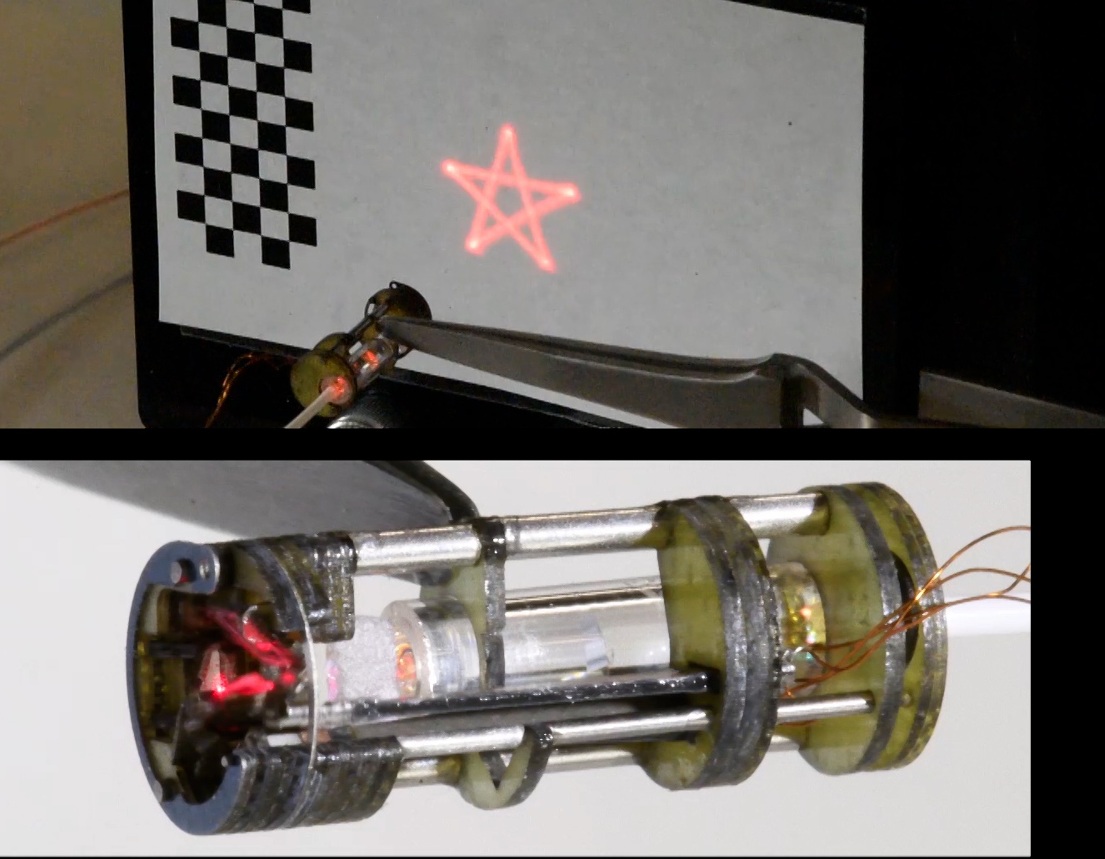
A group of scientists at Harvard University have made an imaginative microrobotic gadget fit for controlling a laser pillar at fast and with an enormous scope of movement, which could help to fundamentally improve the presentation of insignificantly obtrusive medical procedures.
A paper sketching out the consequences of the exploration, distributed as of late in the diary Science Robotics, depicts how the high level opto-electro-mechanical gadget comprising of a laser-guiding microrobot housed inside a scaled down bundle can be coordinated with existing endoscopic careful instruments, giving a vital favorable position over the generally cumbersome laser-pointing innovation presently accessible.
The Harvard group at that point started exploring how the accuracy of that methodology could be brought into other careful fields, for example, laparoscopy and gastroenterology. They at that point made what they portrays as the “unfortunate” disclosure that the laser utilized for vocal crease resection is profoundly specific for that methodology alone, and is constrained by mirrors outside the patient’s body and pointed through their aviation route down to the vocal folds.
“However, we realized that the laser steering elements could be miniaturized using the tools and techniques we have developed in the Wood Lab at Harvard,” he says. “The idea is to put the laser steering components onto the ends of surgical tools, such as flexible colonoscopes and laparoscopic manipulators, with the ultimate aim of providing dramatically improved incision quality relative to existing static laser, electrocautery and cold surgical tools.”
The critical advantages of this methodology, are extra adroitness the capacity to angulate the laser, and automated control the capacity to move the laser with more prominent speed and accuracy than is conceivable with handheld instruments.
MEMS Technology
The gadget, which is only 6 mm in measurement and 16 mm long, contains two mirrors constrained by piezoelectric actuators that direct the laser’s position. To address the test of guaranteeing sufficient movement is produced inside a particularly little gadget, the group utilized smaller than usual consistent components that convert the straight movement of the actuators into the rotational movement of coordinated mirrors.
“These compliant mechanisms are built using printed circuit MEMS (micro-electro-mechanical systems), which allow them to be built very compactly. It is the same fabrication technology that the Microrobotics Lab at Harvard has used for other advances,” they says. “An alternative to our approach would be, for example, to use miniature electric motors, but these simply aren’t made small enough to be suitably miniaturized for these applications.”
The group is as of now centered around conveying the framework in clinical settings and handling the extra difficulties of guaranteeing the power of the gadget in what the “tricky, constrained environments” found inside the human body.
“For example, the system must be robust to external forces, vibrations and fluids. This requires encapsulation and additional validation,” he says.
The scientists exhibited that their laser-controlling gadget could outline and follow complex directions with fast, over an enormous reach and rehash this movement with high precision. They likewise connected the gadget onto the finish of a colonoscope and utilized it to target sores in a counterfeit colon model.
Albeit the framework has so far just been approved utilizing a shopper grade pointing laser, the group is presently chipping away at coordinating the gadget with the sorts of powerful lasers utilized in a medical procedure.
“There are two technical challenges that come from using surgical lasers: firstly, the alignment of all the optical components becomes even more important than with the consumer grade lasers. Misalignment causes energy to be dumped into the device itself instead of transmitted through, which leads to premature failure,” he says.
“Secondly, thermal loads, even if alignment is perfect, become important to manage. The laser energy that is not transmitted through the device due to inherent limitations of the optical materials must be absorbed as heat,” they adds.

Ava is a well-known author and publisher. She published few article on her career. their secret ambition on arriving in Paris was to become a successful writer. Ava is winning multiple awards for her excellent writing, In addition to her regular contributions to English journals and articles.
Disclaimer: The views, suggestions, and opinions expressed here are the sole responsibility of the experts. No journalist was involved in the writing and production of this article.

